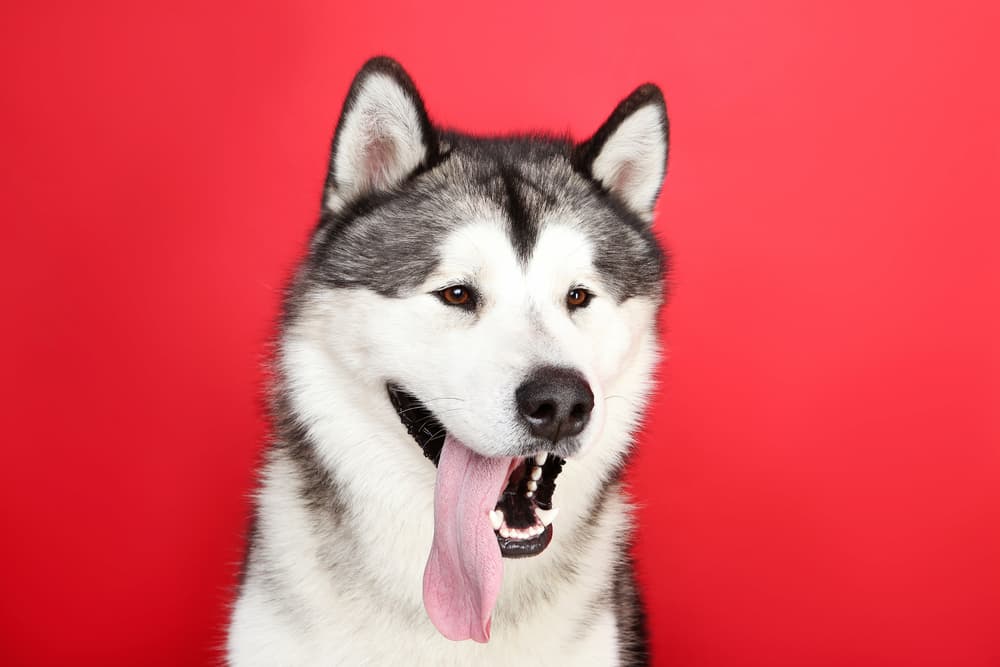
Alopecia X

Our guide has been authored by qualified veterinarians, but should not be taken as substitute for medical advice or professional veterinary consultation. If your pet displays any unusual symptoms, we strongly advise seeking guidance from a veterinarian
Understanding Alopecia X in dogs
Alopecia X, also known as “Black Skin Disease” or “Coat Funk”, is a skin condition that primarily affects only certain breeds of dogs, particularly ones with a plush coat – longer, fuller fur. Alopecia X manifests in a disruption of normal hair growth, which leads to bald spots. It’s a somewhat mysterious and poorly understood disorder, but it is believed to be linked to hormonal imbalances, specifically involving sex hormones.
Alopecia X's Causes: Uncovering Triggers
- Hormonal imbalances: the primary theory behind Alopecia X is that an imbalance in sex hormone levels disrupts the normal hair growth cycle in affected dogs.
- Genetic predisposition: Alopecia X seems to have a genetic component, as certain breeds (such as Nordic ones) are more susceptible to developing the condition.
- Melatonin dysfunction: some research has suggested that melatonin, a hormone that regulates sleep patterns and influences hair growth in dogs, may play a role in Alopecia X.
It’s important to note that while these factors are associated with Alopecia X, the condition is complex, and its precise underlying mechanisms are not fully understood.
 Recognizing Alopecia X: Signs and Symptoms
Recognizing Alopecia X: Signs and Symptoms
- Symmetrical hair loss: hair loss often starts on the dog's back and gradually progresses towards the tail. The pattern of hair loss is usually symmetrical on both sides of the body, but it can vary from dog to dog.
- Darkened skin: as hair falls out, the skin underneath may darken, leading to the condition's alternative name, "Black Skin Disease". The darkening of the skin is more noticeable in areas where hair loss is extensive.
- Sparse or thinning coat: in addition to hair loss, the remaining coat may become thin and appear dull.
- No itches: unlike some other skin conditions that cause itching and discomfort, dogs with Alopecia X typically do not show signs of itching or irritation.
- Rat-tail appearance: as the condition progresses, the dog may develop a "rat-tail" appearance, where hair loss is most pronounced near the tail, and the tail itself may become sparse.
- Loss of guard hairs: guard hairs are the longer, stiffer, and more protective hairs that provide a dog's primary coat coverage. Dogs with Alopecia X may lose these guard hairs, leaving only the softer undercoat or no coat at all.
 Alopecia X Diagnosis: How it's Identified
Alopecia X Diagnosis: How it's Identified
The first step is a thorough physical examination of the dog and medical history, including any previous skin or coat issues, any changes in behavior, and any recent changes in diet or environment. Then, the vet will try to rule out other potential causes of hair loss, such as parasites, allergies, infections or endocrine disorders. In some cases, a skin biopsy may be recommended to help evaluate the structure of the hair follicles and skin, and it can help confirm the diagnosis of Alopecia X.
Since Alopecia X is believed to be linked to hormonal imbalances, the vet may conduct hormonal testing, including measuring levels of sex hormones like testosterone and estrogen. In some instances, a tentative diagnosis of Alopecia X may be made based on clinical signs and the exclusion of other causes. The veterinarian may then initiate a trial of hormonal therapy or other treatments, such as melatonin supplementation or neutering, to see if the dog’s condition improves.
 Treating Alopecia X: Options and Approaches
Treating Alopecia X: Options and Approaches
There are several treatment options that veterinarians may consider to manage the condition:
- Sterilization – this is the first step in treatment to resolve any existing hormonal imbalances. Many animals may grow their hair back after spaying or neutering.
- Melatonin – this drug is administered daily for months. Around 40% of dogs will show response after 6-8 weeks. Melatonin is then tapered to a weekly dose.
- Prescription diets – special diets enriched with specific nutrients or supplements like omega-3 fatty acids may be prescribed to improve skin and coat health.
- Topical therapies – shampoos, creams, or ointments containing ingredients like benzoyl peroxide or sulfur may be used to treat any skin infections that could be exacerbating hair loss.
- Photobiomodulation therapy – also known as low-level laser therapy, this non-invasive treatment may stimulate hair regrowth in affected areas.
- Microneedling – this is a procedure used to encourage hair growth by stimulating the hair follicles. There are mixed success rates reported.
Whatever you end up choosing, it’s essential to remember that the response to treatment can vary from dog to dog. There’s no definitive cure for Alopecia X, and managing the condition often involves a combination of therapies tailored to the individual dog’s needs.
Alopecia X: Surprising Facts

Alopecia X typically develops in dogs between the ages of 1 and 5 years old, though it can occur at any age.

Alopecia X interferes with the normal hair growth cycle - the anagen (growth) phase becomes shorter, while the telogen (resting) phase becomes longer. This results in slower hair regrowth and eventual hair loss.

Some dogs with Alopecia X experience seasonal changes in their coat. Hair loss may worsen during specific times of the year, such as fall or spring.
 Vet's Tip: Dealing with Alopecia X
Vet's Tip: Dealing with Alopecia X
If your dog is intact, your veterinarian might suggest neutering (spaying or castrating) as a potential treatment option. Neutering can sometimes help improve hair regrowth by influencing hormone levels, though it’s not guaranteed to work for every dog.




Price Tag

Latest in Research and Treatments
Recently micro-needling and fluorescent light therapy are getting more common in veterinary practice to treat alopecia X.
dogs breeds Prone to Alopecia X
Did you know?
Enrolling in Animalia Pet Insurance
while your pet is healthy is a wise decision.
Waiting until a disease develops means it won't be covered.











